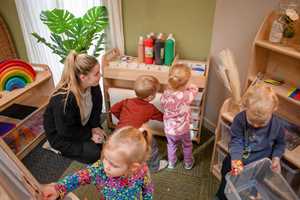
Lesson Ideas and Activities
5 Fun Playground Activities To Help Children Succeed In Primary School
1. Help children to learn how to manage failure and adversity
To expect success all the time is unrealistic because failure is equally important for human growth as winning. To master a skill necessitates a degree of incompetence to become capable.
The key to helping children to correctly manage adversity and to view ‘failure as a stepping-stone to success’ is to put them in challenging situations, to support them to overcome setbacks, fail effectively and have opportunities to grow and learn from them.
The playground aids children to persevere and to develop resilience, to push through and keep trying until they are skilled and have positive results.
Build perseverance and resilience to push through...
An inclusive playground will have an assortment of apparatus, focused on specific areas of learning, for example, active play equipment, sensory play zone and imagination play area.
These pieces of equipment can help children to come to the realisation that not everyone is good at everything: people have different talents. They also help children to appreciate that instant gratification is improbable.
People do not win all the time and to be great at something you must push through the failure and keep trying as success is made on a foundation of errors.
Active Play Equipment such as Trim Trails and Climbing Frames present a variety of challenges for children to master and build their confidence.
As these apparatus are inviting and allow lots of children to use them at the same time, children can inspire each other and model and imitate friends trying again and again, without feeling disheartened and giving up.
Each time, attempting a different method to persist thus putting trial and error into practise.
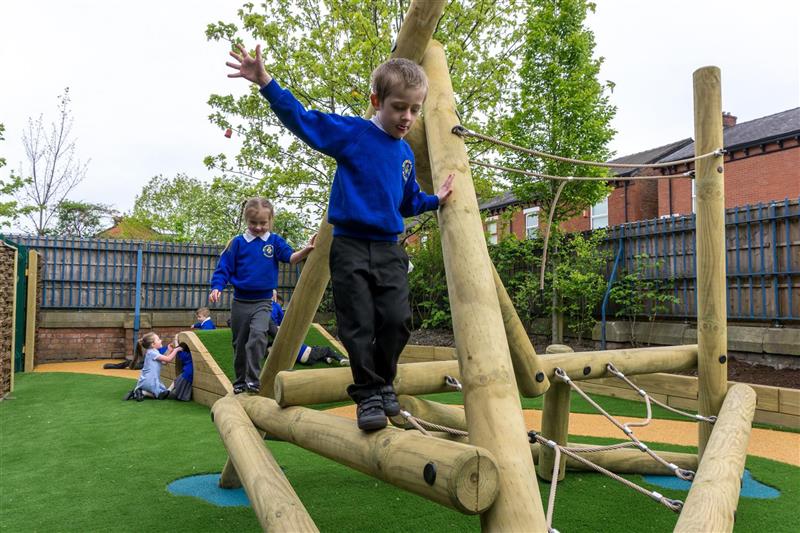
2. Make learning enjoyable
When learning is fun and pleasurable, children are stimulated and less likely to view it as an inconvenience. Psychologists have found that good mood creates smarter, more engaged and keener children. As optimistic attitude is the basis of success.
Creativity is important when teaching children. Traditional methods of chalkboard and classroom learning might not be enough to keep children engaged.
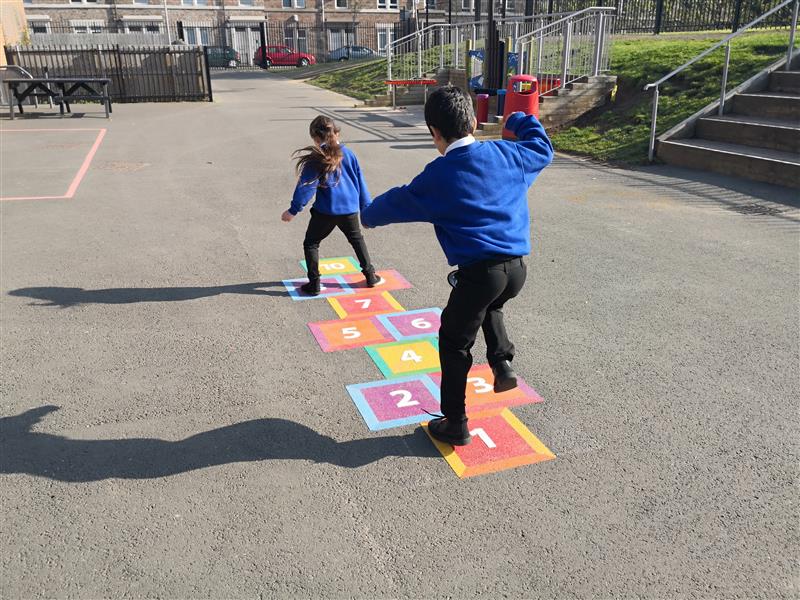
For younger children who are struggling to grasp key mathematic concepts, graphic aids in the form of attractive Playground Markings, such as the ‘1-10 number caterpillar’, as a physical number line, to work out subtraction and addition calculations, can be very beneficial.
This way, they are combining fun physical play with learning arithmetic’s.

Similarly, for children who are struggling with understanding mass and volume, they might benefit from using Sand and Water play, pouring them into containers to see a visual demonstration of concepts such as ‘less than and more than half full’.
Play based learning raises curiosity and an intrigue for learning, where children can make connections with people and the real world.
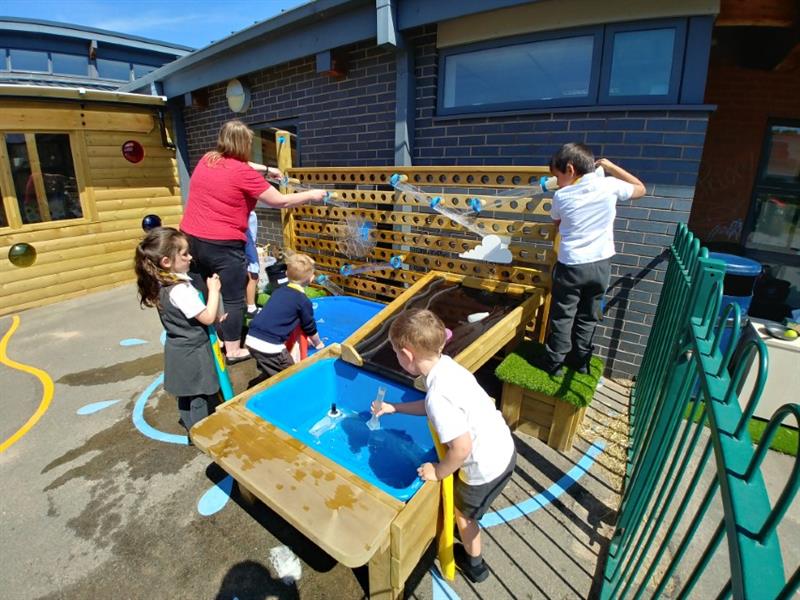
3. Include games in learning
“Games is the highest form of research”
- Albert Einstein
Psychologists have come up with a concept called ‘gamefication’. It essentially describes spinning learning into a game to improve engagement. Children love playing and when learning turns into a game, it becomes instantaneously more appealing to them and they respond to the information more speedily.
A few examples of how to combine learning with play-based games on the playground have been highlighted below.

Stickman using the sand table...
Play-based learning is a great way to engage children to expand their knowledge on key concepts. For instance, playing stickman, using the sand table to learn comprehension and expand vocabulary.
This way sensory play is combined with learning words, consequently more neural pathways being activated, produces better recall skills for children.

Learning shapes...
The playground is resourceful when teaching children about shapes. They can look for precise shapes in the equipment, for example, squares, circles, rectangles and triangles. They can create different shapes in the mud kitchen.
Equally, children can have a competition on who can find and sort the shapes in the water table.
Develop counting skills...
There are many diverse ways of honing children’s counting skills on the playground. By using the numbers hopscotch, similarly counting the number of leaves they can find the playground, or how many of their friends are on the playground are just a few examples.
4. Practise cause and effect
Teaching children cause and effect is important, so that they understand the consequence to their actions. In turn, this helps to builds self-control, self-esteem and teaches them an effective way to solve problems, which will continue to serve them into adulthood.
Examples of fun outdoor activities to teach children cause and effect are highlighted below.
Role Play...
Each pair is given a piece of paper with a scenario to act out on the Performance Stage, without using words. The class must then identify the cause and effect.
An example of the scenarios could be someone scores a goal and the crowd cheers. Another one could be a child is jumping on the bed and gets told off. This is the time for teachers to be inventive and change the scenario based on the ability of the class.
Experiments...
A great way of seeing cause and effect in practise is by doing experiments. Children can come up with a simple hypothesis and learn that the experiment would be the cause and the outcome would be the effect.
An example of a fun experiment they can conduct in the playground is by setting up a paint station in the outdoor gazebo, children can make predictions on what colour would be produced if they were to mix two primary colours together.
The guesses can them be written out on the giant whiteboard for everyone to see. The experiment would commence and the colour created would be the effect.
5. The art of relaxation and switching off
Like adults, children ought to be equipped with the skills required to switch off and actively relax therefore producing better focus in class. To help students to chill out, in preparation for further classroom learning, there has been growing emphasis on mindfulness in the past few years.
Mindfulness is defined by the art of staying present in the moment and it is thought to be beneficial in helping children to stay calm and concentrate in classroom.
Using a large outdoor space, like the MUGA, children can dedicate a few minutes each day to practise yoga poses such as breathing, releasing tension, elongating, standing strong, feeling well and being aware.
The benefit of being outdoors is that listening to white noises such as the leaves rustling, trees swaying, and birds chirping, is known to have a relaxing and soothing effect and increase the appreciation of nature.
Similarly, the Daily Mile Track can be used to walk the distance of a mile (20 minutes) to burn off steam and clear their minds.
View our full range of educational Playground Equipment designed to meet the needs of schools and nurseries. Our Playground Consultants will work with your school to design a playground environment which suits your children and schools needs. Contact Us for free, expert advice.
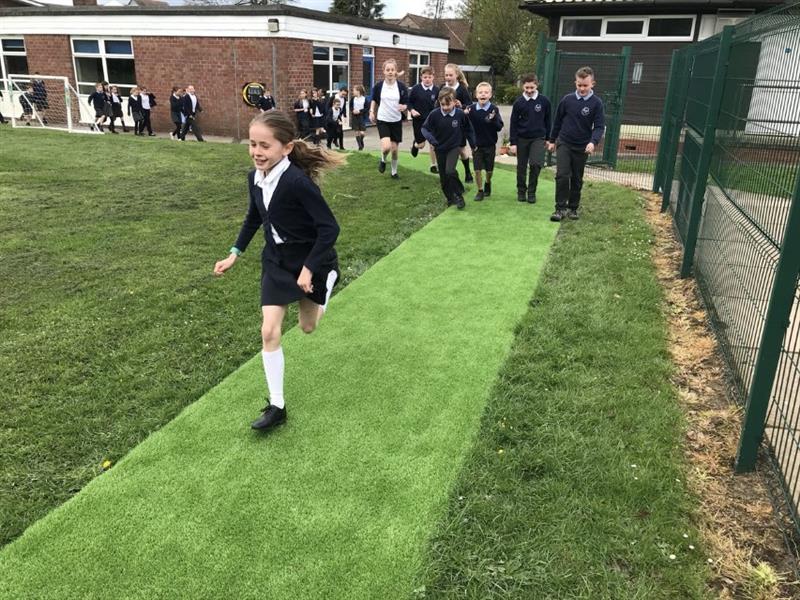



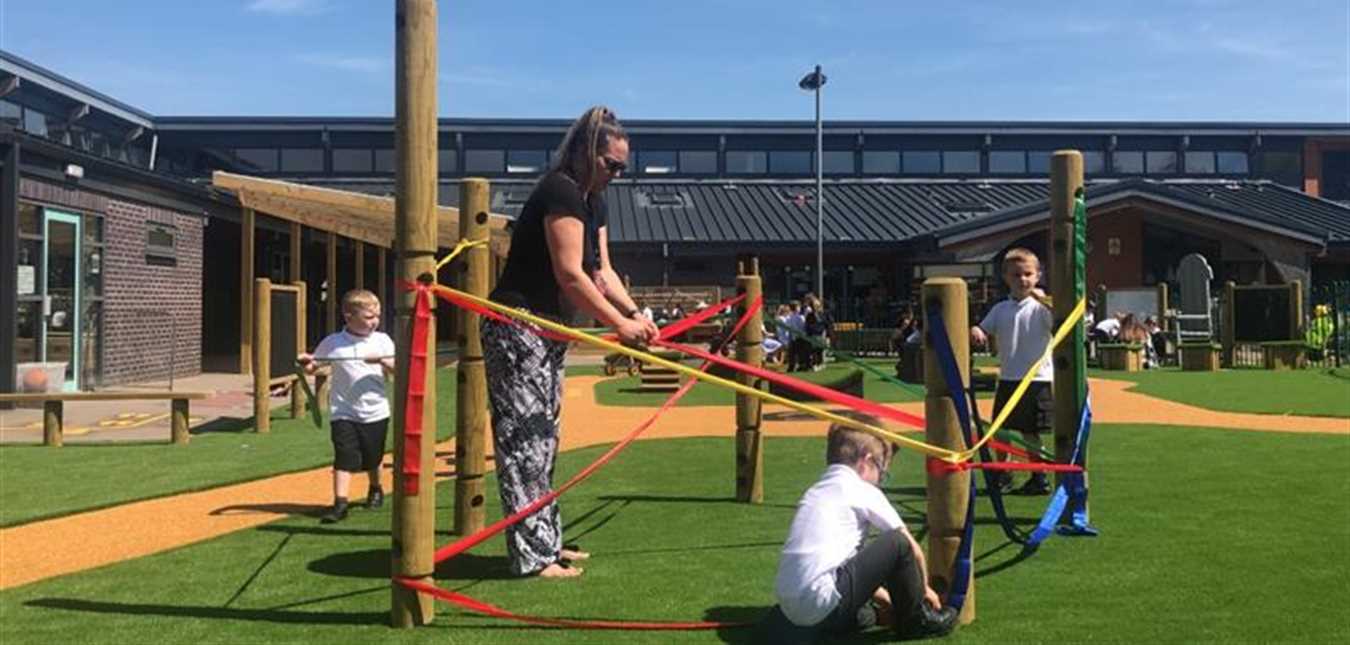
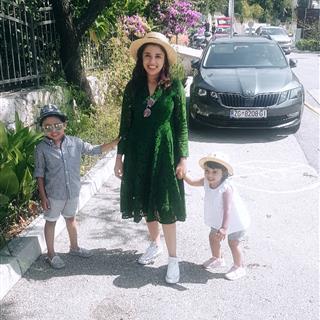
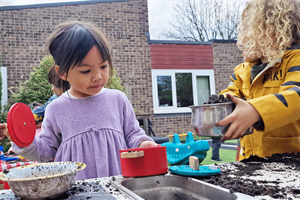
 (Custom).jpg)